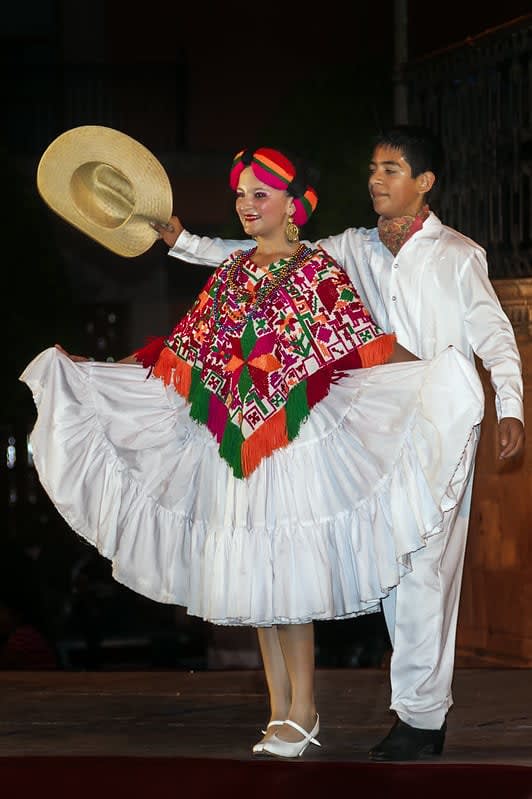
The Huapango Dance: Intricate Footwork and Cultural Flourish
The origin of the Huapango dance and music dates back to the 17th century. It is a Mexican musical genre usually played in the Huasteca Potosina region.
It has three variants: the typical huapango or son huasteco, played by a trio; the norteño and the mariachi.
The word huapango is derived from the Nahuatl word Huapantli (wooden board).
The huasteco trios, besides playing the music with their instruments, guitar, violin, and jarana, interpret and improvise verses according to the place and the people they meet during their performance.
They are accompanied by dancers who make a perfect harmony of song, music and dance to form a musical language full of joy.
Where is Huapango music popular?


Huapango is played and danced in the Huasteca Potosina, which comprises several Mexican states such as Hidalgo, Veracruz, San Luis Potosí, Tamaulipas, Puebla, and Querétaro.
The clothing of Huapango performers is mostly white with colorful embroidery.
Men wear a blanket shirt and pants, although some wear denim pants made with some small embroidery, black booties, a hat, and a bandana around the neck.
While women must wear a colorful skirt with a white background and embroidered blouse, the hair is braided with ribbons, necklaces, earrings, and rings, with thick-heeled shoes in white or black.
How to dance Huapango
The dance is mostly zapateado with fast steps, during the choruses that are performed during this are huasteco and a moment of rest with shorter steps as if the foot is dragged.
This typical Mexican dance is mainly practiced on a wooden platform so that the “zapateada” of the dancers can be heard better.
Steps
In addition to rhythm and joy, you need to learn 5 main steps:
- Campanas
- Deslizados
- Puntas
- Paso de Tres
- Jaranas
All combined are required to dance Huapango the Hidalgo style.
Here’s the breakdown:
Campanas: this step consists of swinging from one foot to the other with two blows to the floor.
Deslizados: in which the right foot is tapped and then slides to the front and returns to give a blow and the left foot comes out to do the same.
Puntas: consists of tapping with the right foot and putting the toe of the left foot on the floor.
Paso de tres: this is a zapateado used in almost all Mexican folkloric dances, which consists of tapping the feet on the floor every three beats to mark a higher beat.
Jaranas: which consist of tapping the right foot forward and the left foot back and then changing to right foot back and left foot forward, and after a few repetitions, tapping five times in a row in one direction, either right or left.
Huapango Dance and Music: Final thoughts

The Huapango dance stands as a testament to Mexico’s rich cultural heritage, showcasing its vibrant rhythms, intricate footwork, and heartfelt expression that characterize this captivating art form.
Through its origins in indigenous traditions, the Huapango has become a symbol of community, celebration, and resilience.
Its complex choreography challenges dancers to master intricate steps, syncopated rhythms, and graceful movements, fostering a deep connection between the dancers and the music.
Moreover, the dance serves as a reflection of the diverse cultural diversity of Mexico, with regional variations adding unique flavors to each performance.
You may want to read: Chinelos Folk Dance: The Heartbeat of Morelos’ Cultural Legacy
Beyond its artistic merits, the Huapango embodies the spirit of unity and joy, bringing people together to celebrate life’s moments both big and small.
Whether performed at weddings, festivals, or simply as a spontaneous expression of joy, the dance serves as a reminder of the power of music and movement to uplift the human spirit.